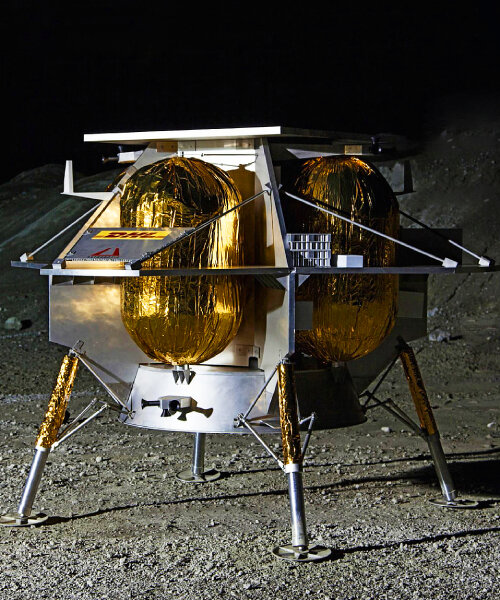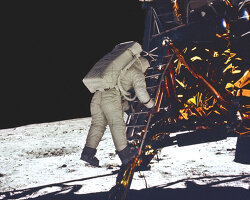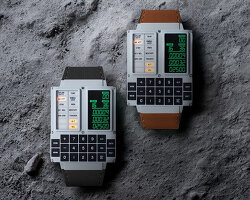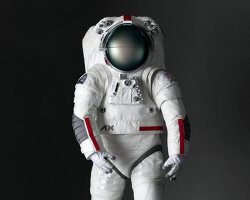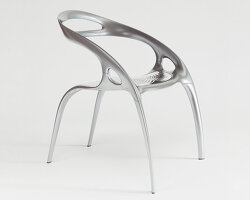Lunar codex ships art archives to the moon in digital form
Using shielded memory cards and coin-sized foil disks, the Lunar Codex project by physicist and author Samuel Peralta is flying over 30,000 collections of artists, writers, musicians, filmmakers, and creatives from 157 countries to the moon and space to permanently store, archive, and install them there. There will be four time-capsule collections in total that will fly magazines, exhibitions, albums, films, videos, podcasts, novels, and even poems in digital forms, with the first one, named The Orion Collection, having already been launched on November 16th and returned to Earth on December 11th, 2022 via NASA Artemis 1 and Space Launch System Orion Spacecraft.
Three more moon missions are soon to follow. The Nova Collection is expected to launch between October and November 2023 to Malapert A Crater, Lunar South Pole, using SpaceX Falcon 9 / NASA CLPS-2 Mission Lander, while The Peregrine Collection – the third time capsule – is set to launch between November and December 2023 to Sinus Viscositatis, via United Launch Alliance Vulcan Centaur / Astrobotic Peregrine Lander. The last of the time capsule, called The Polaris Collection, is planned to be launched on November 2024 to Nobile Crater, Lunar South Pole, via SpaceX Falcon Heavy / Astrobotic Griffin Lander / NASA VIPER Rover.
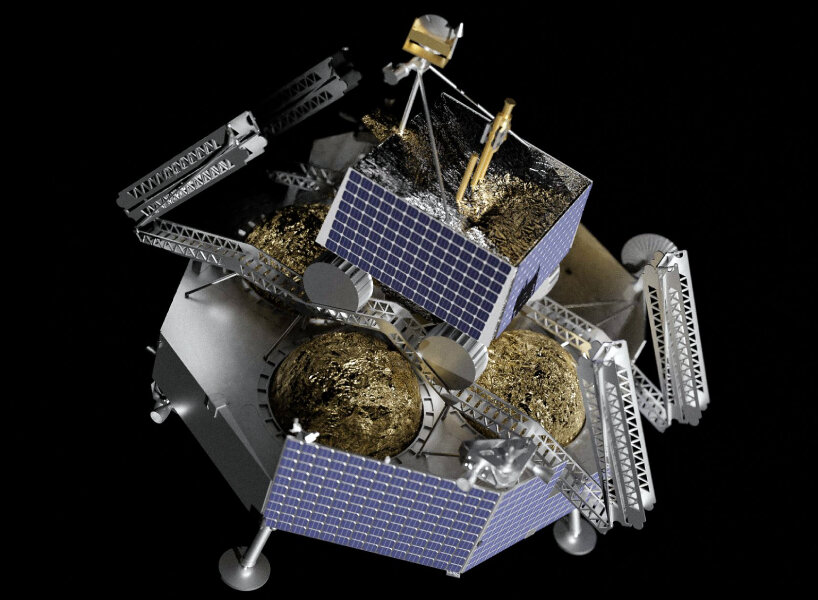
Griffin carrying Viper during Lunar transit | image by Astrobotic
Founded by physicist and author Samuel Peralta, the Lunar Codex is using a technology called NanoFiche to archive over 30,000 works of art and literature. It is an even smaller version of the already compact-sized microfiche, which is a piece of film containing microphotographs. It is also not affected by temperature or humidity and can last for hundreds of thousands of years or even longer, making it a suitable choice for long-term archival storage. With NanoFiche, the Lunar Codex can store images, texts, and music in high resolution of 20,000 dots per inch so that human travelers on the moon can still vividly look at them using a magnifying glass.
On top of the coin-sized foil disks, the Lunar Codex is also digitizing the collections and storing all the information like graphics and texts in digital forms on small, shielded memory cards that can be read and written by machines. They can also retain data when not powered, and even NASA used similar memory cards for archival purposes on their Orion spacecraft during the Artemis 1 mission to the moon in 2022. By using these memory cards, Lunar Codex can hold a lot of information without additional weight, which is a concern when shipping objects outside of Earth.
To ensure the data is safe, Samuel Peralta and his team create multiple copies of the files (redundancy) and shields them from potential errors. The Lunar Codex payload is kept in a special capsule called MoonBox, and these capsules are consolidated with other payloads into a single DHL MoonBox canister. When the spacecraft, called the Peregrine Lander, lands on the Moon, the DHL MoonBox is physically bolted to its framework. This serves as a marker for the time capsules on the lunar surface.
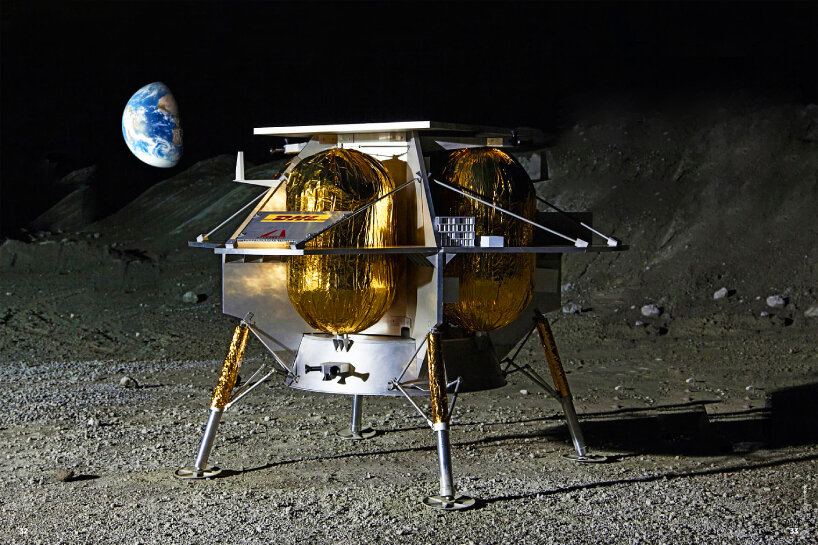
Peregrine Lander on the lunar surface | image by Astrobotic
Memory cards shipped in special canisters called moonbox
On top of the coin-sized foil disks, the Lunar Codex is also digitizing the collections and storing all the information like graphics and texts in digital forms on small, shielded memory cards that can be read and written by machines. They can also retain data when not powered, and even NASA used similar memory cards for archival purposes on their Orion spacecraft during the Artemis 1 mission to the moon in 2022. By using memory cards, Lunar Codex can hold a lot of information without additional weight, which is often a concern when shipping objects outside of Earth.
To ensure the data is safe, the project’s team creates multiple copies of the files (redundancy) and shields them from potential errors. The Lunar Codex payload is kept in a special capsule called MoonBox, and these capsules are consolidated with other payloads into a single DHL MoonBox canister. When the spacecraft, called the Peregrine Lander, lands on the Moon, the DHL MoonBox is physically bolted to its framework. This serves as a marker for the time capsules on the lunar surface.
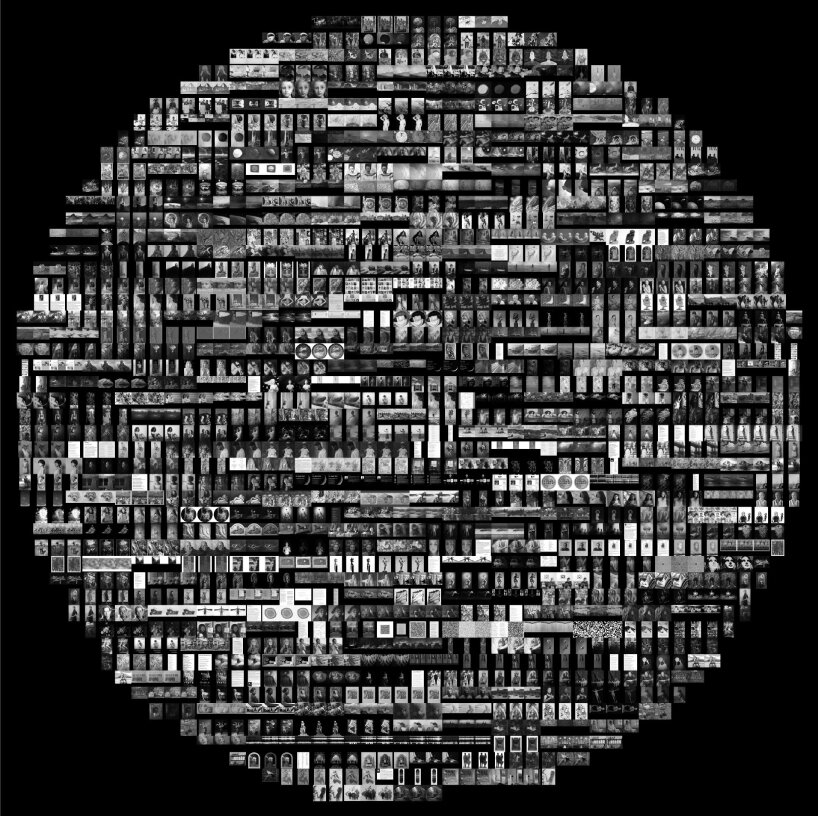
nickel nanofiche technology sample | image by Samuel Peralta
Samuel peralta archives lunar codex for moon travelers
Lunar Codex is privately owned by Incandence, a company covering interests in arts, technology, and business, and it also holds Incandence’s physical time capsules, specific archival technology, and related trademarks. The lunar landers themselves are owned by two NASA prime contractors – Astrobotic and Intuitive Machines (IM) – via NASA’s Commercial Lunar Payload Services (CLPS) program. The project came about as an attempt to install human-created art, literature, music, and movies on the Moon so that when people look to the sky, it gives them a symbol of hope.
‘I dreamed of going to the Moon and one day it was possible. I’m sharing that dream with some of the artists, authors, musicians, and filmmakers whose work I love,’ says Samuel Peralta. ‘The Lunar Codex is also a message-in-a-bottle to the future, so that travelers who find these time capsules might discover some of the richness of our world today. It speaks to the idea that, despite wars and pandemics, and environmental upheaval, humankind found time to dream, time to create art.’
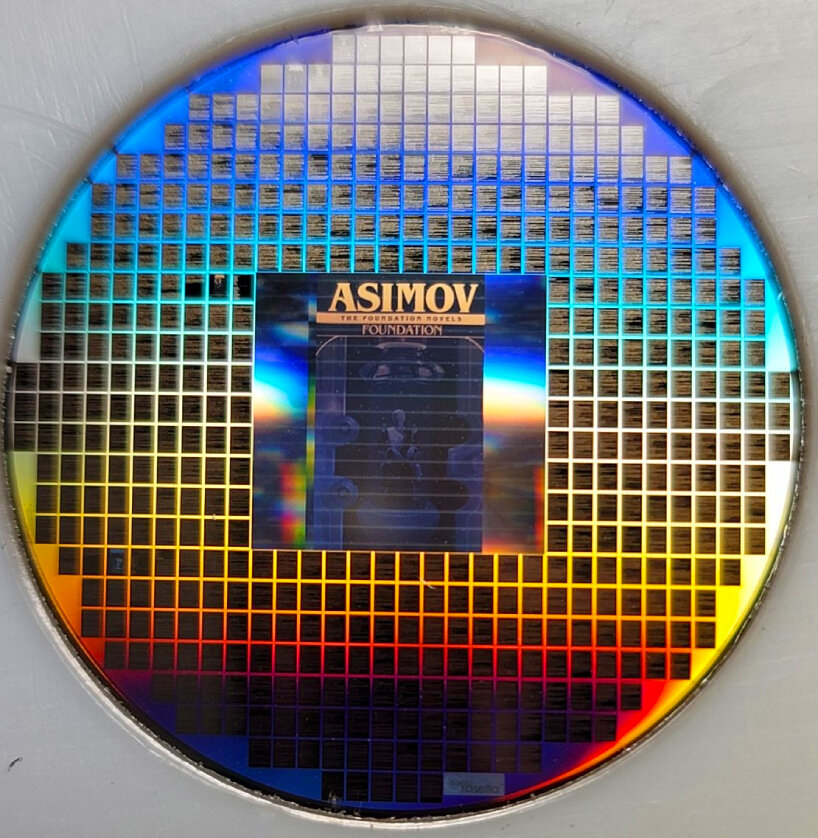
Asimov’s “Foundation” on a nickel-foil disk the size of a quarter | image by Samuel Peralta
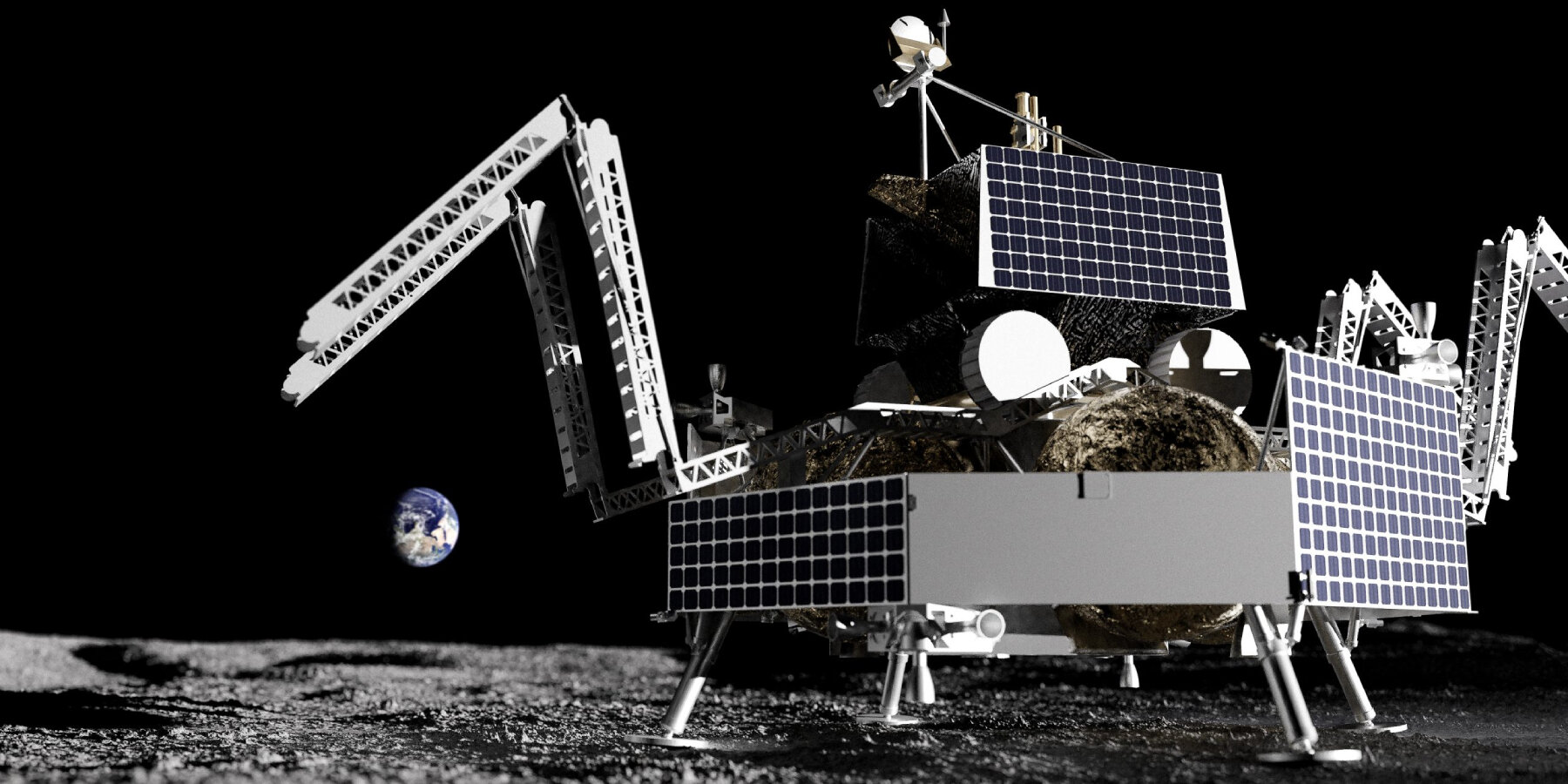
Astrobotic’s Griffin Lander will ship Lunar Codex’s fourth collection to the moon in early 2024 | image by Astrobotic
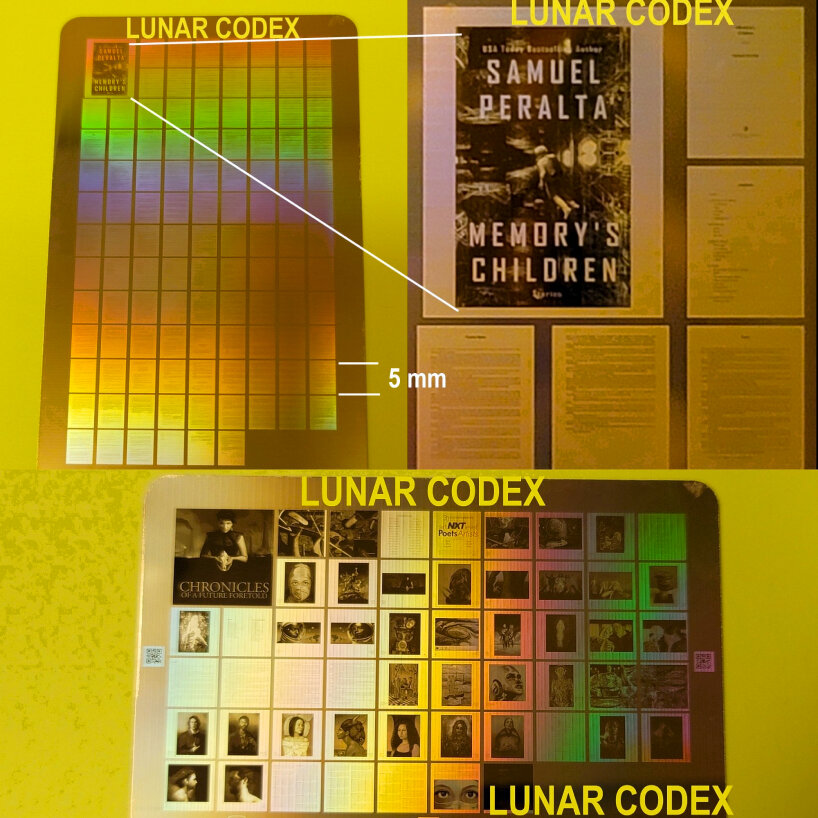
the works are shrunken in digital format but are still viewable using a magnifying glass | image by Samuel Peralta
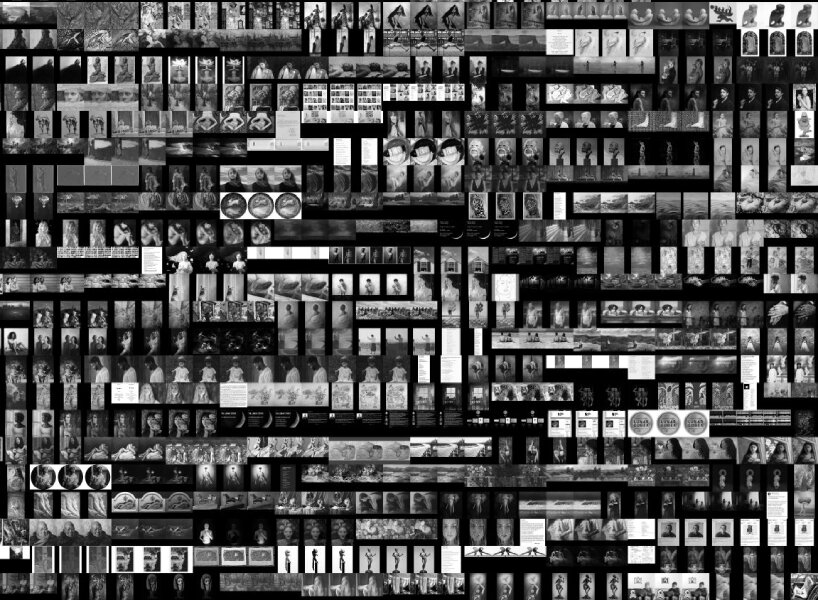
close-up view of the collections coded on a coin-sized foil disk | image by Samuel Peralta
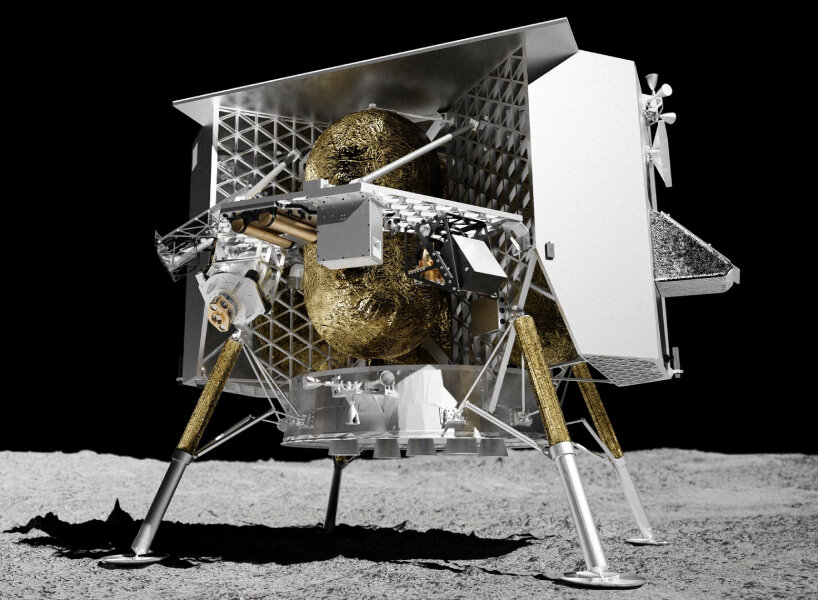
Peregrine Lander will ship the third collection this November and December 2023 | image by Astrobotic
project info:
name: Lunar Codex
founder: Samuel Peralta
